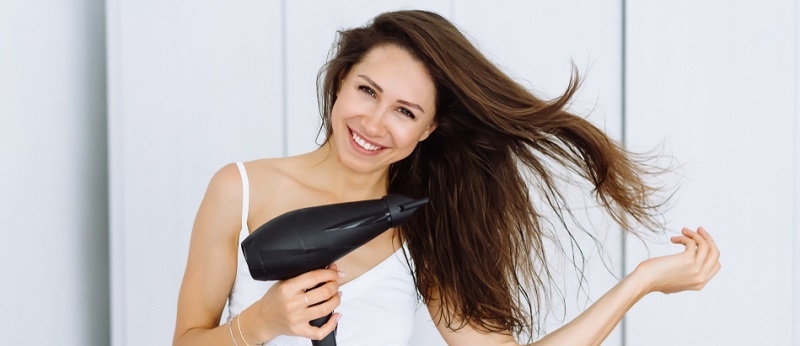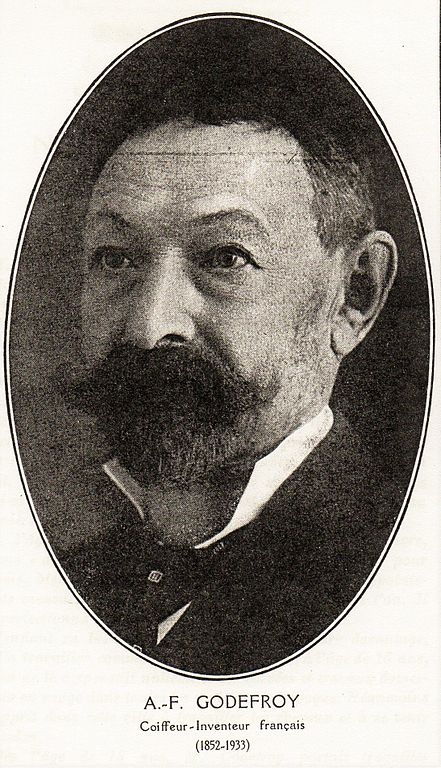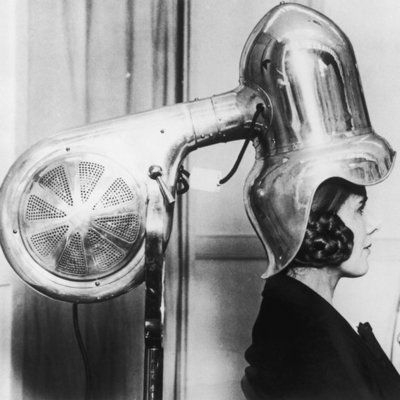What is the First Hairdryer In the World?
 |
| Photo: Beautishe |
Let's go back to history and acquire knowledge of the first hairdryer in the world:
History of the first hairdryer
Inspired by the vacuum cleaner
The device whose primary function is to blow hot (or cold) air to accelerate the water evaporation process and effectively dry hair was invented in the late 19th century by French hairdresser and inventor Alexandre-Ferdinand Godefroy.
 |
| Alexandre-Ferdinand Godefroy. Photo: Wikimedia Commons |
Known as the “séchoir” (dryer) at the time, the device which was halfway between a vacuum cleaner and a hairdryer comprised a sort of long cap connected to a flexible hose that projected hot air from a gas stove onto the wearer’s hair! It was not portable in the least – and it is easy to see why – and was only used in hairdressing salons frequented by a posh and urban clientele.
The first hairdryer and its father, Alexandre-Ferdinand Godefroy
The first handheld hairdryer appeared on the market in 1925. It produced only 100 watts of heat and therefore did not have sufficient power to dry hair quickly. It weighed over 2 lb (1 kg) because it was made of heavy steel and zinc.
Over the next 20 years, engineers improved the design and managed to triple the heat output, raising it to 300 watts. By the 1960s, further improvements in electrical technology allowed the production of hairdryers with up to 500 watts of power.
Portable but so heavy…
The very first portable “dryers” were made from metal and initially fitted with a wooden handle, later replaced with Bakelite. They were very heavy, weighing close to 1 kg, and were difficult to use, PlasticsleMag cites.
 |
| Photo: Pinterest |
Their electrical connections were not always very safe and ended up causing a number of, sometimes fatal, accidents involving overheating and electrocution. The airflow created by the machines was very weak, given their 100-watt capacity – and the women who tested the first models were often exhausted well before their hair had dried!
Design of the hairdryer
One of the key factors to consider when designing a portable hairdryer is the amount of heating power it can produce. Since warm air is capable of absorbing more moisture than cold air, the temperature of the airflow is critical. By calculating the specific heat of the air and understanding the maximum temperature that can be used without burning the skin, engineers can calculate the amount of power required for the heating element, aa cites by MadeHow.
This ensures that the device will generate enough heat to dry the hair quickly. However, it is not enough to simply raise the temperature of the hair; the air must also pass rapidly through the hair for efficient moisture removal. Therefore, the efficiency of the fan is also a critical consideration.
Another key design criteria are the safety of the device. First, the hairdryer must not become so hot that it burns the user during operation. The plastic housing must remain at a comfortable temperature and cannot overheat or else it could melt or catch fire.
To solve this problem, engineers have developed temperature cutoff switches that prevent the heating coil from getting too hot. This cut off switch also turns off the heating coil if the blower motor on the fan stops functioning. Second, the hairdryer must not cause an electric shock. A special shock safeguard, a Ground Fault Circuit Interrupter (GFCI), is used in modern hair dryers to prevent accidental electrocution.
Other factors to consider include the weight of the unit and a user-friendly design. For the sake of convenience, hair dryers are designed to weigh only about 1 lb (500 grams), and they are made to be easy to handle during operation.
Raw materials
Hairdryers are assembled from a series of components including the electrical motor, the fan blade, copper wiring, switching mechanisms, and various other electrical components. The plastics used to make the outside shell of the hairdryer must be durable, yet light-weight.























